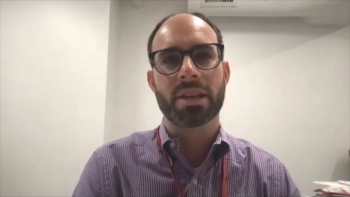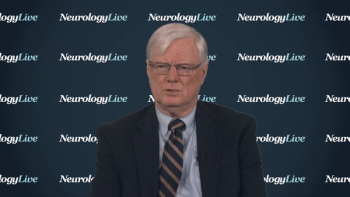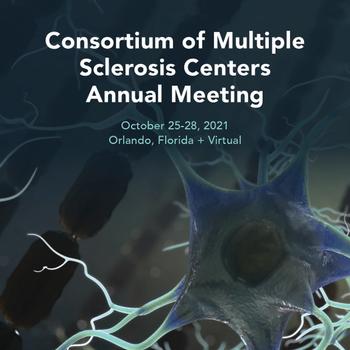
Take 5 minutes to catch up on NeurologyLive®'s highlights from the week ending November 26, 2021.

Take 5 minutes to catch up on NeurologyLive®'s highlights from the week ending November 26, 2021.

In line with the push for more comprehensive care, literature suggests that patients with multiple sclerosis benefit from physical therapy interventions to help manage disease symptoms.

The assistant professor of neurology at Weill Cornell Medicine discussed his future aspirations to uncover more about the beneficial effects of anticoagulants in reducing recurrent stroke. [WATCH TIME: 3 minutes]

The Bruton tyrosine kinase inhibitor has been evaluated in 2 phase 3 trials, GEMINI 1 and GEMINI 2 (NCT04410978; NCT04410991), in patients with relapsing-remitting and relapsing secondary progressive MS.

In a NeurologyLive® Insights series, experts in the diagnosis and treatment of Dravet syndrome discussed the management of the disease and the utilization of approved treatments to improve outcomes in patients.

In a NeurologyLive® Peer Exchange series, experts on the care of patients with multiple sclerosis offer recommendations for selecting and sequencing therapies used to treat patients with relapsing disease.

The director of the Comprehensive Epilepsy Center at NYU Langone provided closing thoughts on how clinicians can begin to shift gears from research to prevention of SUDEP. [WATCH TIME: 2 minutes]

The field of MS is shifting focus to issues such as understanding and tracking disease progression, approaches to treatment initiation, and the roles of diet and exercise in pathogenesis and disease course.

Aducanumab’s (Aduhelm; Biogen) $56,000 price point reflects the larger challenges of the United States’ insurance system and incites a cyclical series of events that have repercussions on cost of future therapies, state budgets, and legislative decisions.

The medical director of the Jefferson Sleep Disorders Center at the Vickie and Jack Farber Institute for Neuroscience of Jefferson Health offered his insight into the current state of care for sleep and the progress made this year.

Discussing newer treatment options in the MS field, the staff neurologist in the Neurological Institute’s Mellen Center for Multiple Sclerosis Treatment and Research at Cleveland Clinic noted that patient preference can play a part in the decision-making process. [WATCH TIME: 3 minutes]

The study is the first and only to compare the 2 anticalcitonin gene-related peptide medicines for migraine preventive treatment.

The director of the Sleep-Wake Disorders Center at Montefiore Medical Center provided knowledge on how the presence of other comorbid sleep disorders affects patients with insomnia. [WATCH TIME: 2 minutes]

The director of the Comprehensive Epilepsy Center at NYU Langone discussed the large-scale impact heart rate variability has on preventing SUDEP and the unanswered questions that remain.

The American Academy of Neurology’s statement touched on the roles played by the principles of beneficence, nonmaleficence, justice, and patient autonomy as it relates to the clinical use of the therapy for this patient population.

In cognitively impaired vs unimpaired patients, investigators found functional connectivity decreases in DMNa and DMNp and increases in the right and left frontoparietal networks.

The staff neurologist in the Neurological Institute’s Mellen Center for Multiple Sclerosis Treatment and Research at Cleveland Clinic discussed emerging treatments in the MS field. [WATCH TIME: 2 minutes]

A total of 77 patients randomized to either ATH-1017 or placebo will be evaluated for improvements in cognition, global, and functional assessments across a 26-week treatment period.

The director of the Comprehensive Epilepsy Center at NYU Langone discussed the necessary steps in validating and utilizing heart rate variability as a biomarker for SUDEP. [WATCH TIME: 3 minutes]

The risk of dementia was substantial and front-loaded following stroke, with the 1-year prevalence similar to the estimate for dementia at any time point. The findings indicate a need for greater engagement between stroke and dementia care.

Although headache and COVID-19 have been linked together in the literature, more studies are needed to better understand the pathophysiology of these headaches and to determine the best treatment options.

Reduced low-frequency power measured at rest was independently associated with an elevated SUDEP risk, presumably through arrhythmogenic mechanisms.

The director of the Mellen Center for MS Treatment and Research at Cleveland Clinic discussed when clinicians should anticipate new therapies to treat progressive MS. [WATCH TIME: 2 minutes]

The optimal range of HbA1c between 6.8% and 7.0% at admission was estimated to have the minimum risk for composite vascular events and stroke recurrence, with notably different levels according to stroke subtype.

The executive chair of the Rockefeller Neuroscience Institute at West Virginia University discussed the potential of focused ultrasound for patients with AD, as well as key takeaways for clinicians from a recent study. [WATCH TIME: 5 minutes]

Here's what is coming soon to NeurologyLive®.

Although not associated with diagnosis, investigators did conclude that substantial/very severe impact of headache attacks and anxiety were correlated with presence of insomnia.

Despite not being significantly superior to placebo on agitation and aggression, lithium showed a greater reduction in those with high Young Mania Rating Scale scores.

The NeurologyLive® team has compiled a roundup of our discussions with leaders in the multiple sclerosis field following the 2021 Annual Meeting of the Consortium of Multiple Sclerosis Centers (CMSC).

Episode 16 of the AUPN Leadership Minute features Rohit Das, MD, of UT Southwestern Medical Center; and Selim R. Benbadis, MD, FAAN, FACNS, FAES, University of South Florida Morsani College of Medicine. [WATCH TIME: 4 minutes]